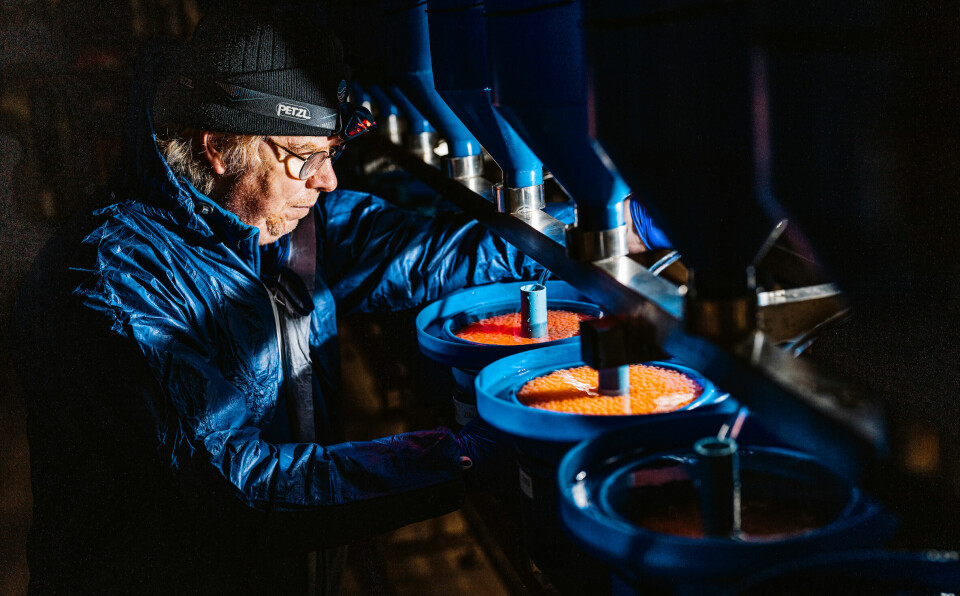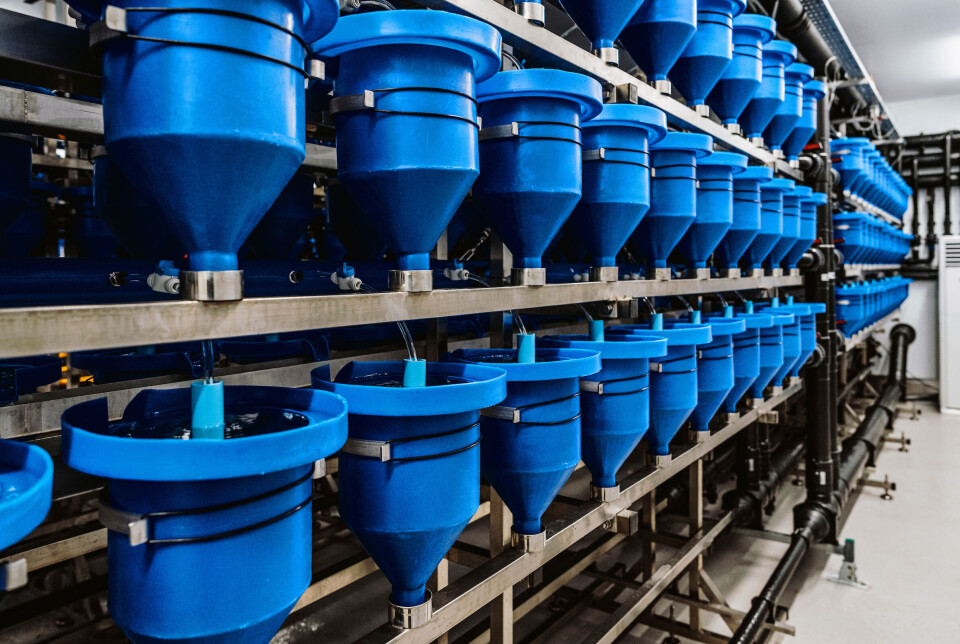
First batch of eggs doing well at Scottish Sea Farms' £2m incubation unit
New facility has mitigated several issues and extends period when smolts can be produced from Scottish-sourced ova, says salmon producer's freshwater boss
Salmon producer Scottish Sea Farms’ new £2 million incubation unit at Barcaldine near Oban has taken delivery of its first ‘green’ (unfertilised) eggs.
The new unit enables SSF to incubate the eggs for longer, at lower temperatures, which has two key advantages: fish should be healthier later in life, and eyed eggs for the company’s hatcheries will be available outwith the normal season for ova.
The first green eggs were fertilised on-site and are doing well, head of freshwater Rory Conn told SSF’s newsletter, The Source.
“The incubation unit is designed to receive eggs immediately post-stripping, giving us greater control in the earliest days of the production cycle,” explained Conn.
Test batches
“We trialled two, smaller test batches during Q4 2023 ahead of receiving our first full intake of around three million green eggs either side of Christmas.
“These were fertilised on arrival at the new unit.
“We conducted a series of assessments, from evaluating the success of the fertilisation process within the first 24 hours, to checking embryonic development around the 60-day stage.
“Then, when the eggs reach the eyed ova stage, they will go through a further quality check to ensure only the viable ones are transferred to incubation trays in our hatcheries.
“There will be room for procedures to evolve, but from the results to date we know already that the quality of water in the green egg unit has mitigated a number of the issues we had been seeing with our intakes of eyed ova.”

The eggs stay in the incubation unit, which is adjacent to the main Barcaldine Hatchery, for between six weeks and five months, depending on requirements, before being moved to one of SSF’s three hatcheries: Barcaldine itself, Knock on the Isle of Mull, or Girlsta in Shetland.
“We have taken the temperature down to below 2°C which, research suggests, results in better outcomes for fish health later on, particularly cardiac health,” said Conn.
From this initial batch alone, we will be able to put close to 600,000 smolts into one of our marine farms at around late August next year ... Without the green egg unit, it simply wouldn’t have been possible
SSF head of freshwater Rory Conn
“And by incubating the eggs over a longer period, we can better meet our year-round requirements for eyed ova, ensuring security of supply.
“From this initial batch alone, we will be able to put close to 600,000 smolts into one of our marine farms at the required time – around late August next year.
“Without the green egg unit, it simply wouldn’t have been possible to produce smolts from Scottish-sourced ova at this time of year.”
Proven water quality
The bespoke unit benefits from the same water purity and RAS (recirculating aquaculture system) technology as the main Barcaldine hatchery.
Water is drawn from the nearby Gleann Dubh reservoir and filtered to remove anything over 0.1 micron (1/10,000th of a millimetre), keeping bacteria and viruses out.
“We’re very confident of our water quality here at Barcaldine, which has been tried and tested over time,” said Conn.
“And the new unit’s ability to maintain water flow, temperature and water quality parameters has been excellent.”
New skills
Barcaldine Hatchery operations manager Mike Tresise said the green egg unit has given freshwater technicians and fish health and engineering teams an opportunity to acquire a new skill set.
“We’re all learning as we go but everyone is being given the opportunity to spend time in the new unit, led by freshwater production support manager Simon Maclellan, and share responsibility for its success.”

While pre-fertilised eggs will still be supplied to Barcaldine, a significant proportion of SSF’s egg production will go through the green egg unit in the next egg season, which starts in Q3 2024.
The unit has a total capacity of seven million ova at any one time and, with an input of up to three batches a year, it could potentially hold 20 million eggs annually.
“The facility is delivering what we expected it to do with this first batch and I’m confident that we will be able to produce the number of eggs we need in order to meet our smolt requirements,” said Conn.
Some of the green eggs SSF will receive will be from its own broodstock, selected for their suitability for the Scottish marine environment and delivered through a partnership with ova supplier AquaGen, which has a facility at Holywood, Dumfries. Others will be from non-SFF broodstock and therefore could be from a variety of egg suppliers.
An advantage of SSF incubating eggs at Barcaldine is that it frees up capacity for more eggs to be produced at Holywood.























































